※本記事にはPR(アフィリエイト広告)が含まれます
One of the indispensable metrics for discussing Major League Baseball is WAR (Wins Above Replacement).
WAR quantifies how many more wins a player contributes to his team compared to a replacement-level player. It incorporates hitting, defense, and baserunning, allowing comprehensive comparisons across players.
Some of you may be wondering:
- What exactly is WAR?
- What is Ichiro’s WAR?
- How great is Ichiro historically compared to other players?
In this article, we will define WAR, explain the differences between fWAR and rWAR, outline its strengths and limitations, and then provide Ichiro’s season-by-season and career totals. We will also compare Ichiro to Shohei Ohtani and other legendary MLB players, and finally discuss WAR’s importance in Hall of Fame debates.
What is WAR? What does it measure?
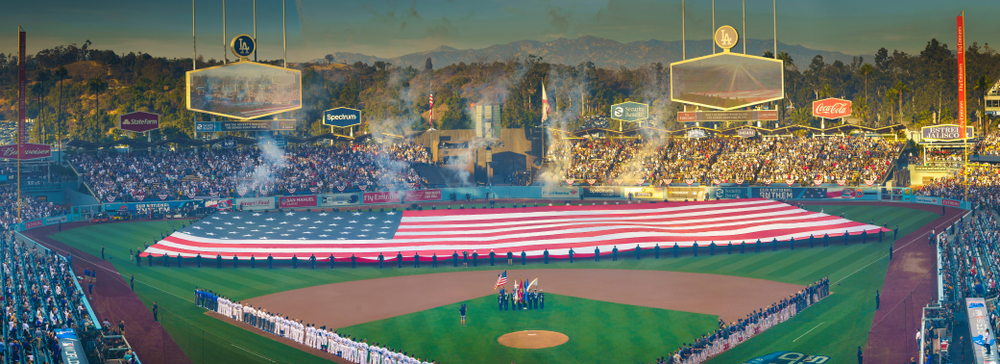
WAR is a key statistic that reflects a player’s total value. Let’s look at it in the following order:
- Definition and calculation of WAR
- Differences between fWAR and rWAR
- The merits of WAR
Definition of WAR (Wins Above Replacement)
WAR stands for Wins Above Replacement. It shows how many additional wins a player adds compared to a replacement-level (bench) player.
It integrates offense, defense, baserunning, and pitching into one value. Generally, a replacement-level team is assumed to have a .320 winning percentage, or about 52 wins in a 162-game season.
By comparing against this baseline, WAR measures how much a player improves team performance. Unlike batting average or home runs, WAR evaluates a player’s overall contribution.
fWAR vs rWAR
There are two main types of WAR:
fWAR (FanGraphs WAR): Calculated by FanGraphs, it uses UZR for defense and FIP for pitching. Because it focuses on fielding-independent pitching, fWAR is often seen as a measure of a pitcher’s raw ability.
rWAR (Baseball-Reference WAR): Calculated by Baseball-Reference, it uses DRS for defense and evaluates pitchers based on actual runs allowed. rWAR reflects real game outcomes more directly.
Advantages of WAR
The biggest advantage is that WAR condenses a player’s total value into a single number, allowing comparisons between hitters and pitchers on the same scale. This makes it invaluable for MVP voting and Hall of Fame discussions.
WAR is also widely used in contract negotiations and salary evaluations. In recent years, analysts often estimate that “1 WAR equals several million dollars” in player value.
Criticism and Skepticism
While WAR is widely used as a comprehensive evaluation metric, it is by no means perfect. Since fWAR and rWARare calculated differently, even the same player can end up with different numbers, leading many to ask: “Which one should we trust?”
Here, we will outline the main criticisms and limitations of WAR in the following order:
- Limitations of WAR
- Criticism: “WAR Increases with Playing Time” and “It Can Be Misleading”
Limitations of WAR
WAR is a useful statistic, but its limitations are clear. First, defensive evaluations differ between fWAR and rWAR, which means the numbers for the same player often don’t match.
fWAR uses UZR, while rWAR uses DRS—so even the same play can be judged differently. In addition, pitcher evaluation methods vary: fWAR relies on FIP, while rWAR takes actual runs allowed into account, leading to discrepancies in results.
Furthermore, WAR cannot fully reflect environmental or team factors. Ballpark dimensions and the quality of a team’s defense affect a player’s numbers, so direct comparisons have inherent limits.
Criticism:“WAR Increases with Playing Time”and “It Can Be Misleading”
Since WAR is a cumulative statistic, players who log more playing time tend to accumulate higher totals. Critics argue this inflates the value of regular players and doesn’t always reflect true talent differences.
For example, a player who stays in the lineup consistently throughout the season can pile up WAR even without standout batting numbers. Because of this, some view WAR as “misleading.”
In some cases, players with average but steady production over many games receive higher WAR than players who deliver dominant performance in shorter stretches.
Thus, while WAR is a helpful tool for player evaluation, it is not a perfect metric. To accurately assess a player’s value, it should be used alongside other statistics such as OPS or ERA.
Ichiro’s WAR: Career and Seasons
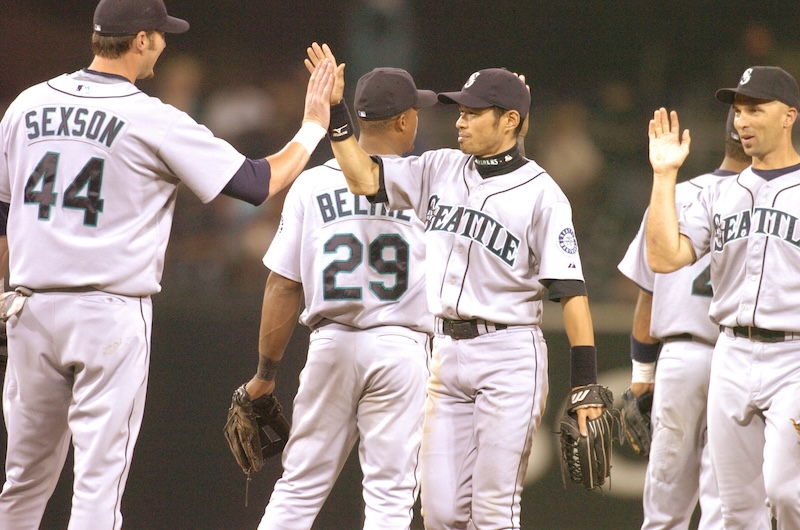
Now, let’s take a closer look at Ichiro’s WAR, both by season and over his career.
We will break it down in the following order:
- Career total WAR and career-high WAR
- Year-by-year WAR trends
Career Total WAR and Career-High WAR
Ichiro’s career WAR and peak WAR are as follows:
| fWAR (FanGraphs) | rWAR (Baseball-Reference) | |
|---|---|---|
| Career Total (MLB) | 57.6 | 60.0 |
| Career-High Season | 2004: 7.1 | 2004: 9.2 |
| Prime Years (2001–2010) | 4–7 range | 5–9 range |
| Later Years (2011 onward) | Around 0–1 (2015: -0.8) | Around 0–1 (2015: near 0) |
Ichiro finished his career with 57.6 fWAR and 60.0 rWAR. His peak came in 2004, when he posted an outstanding 7.1 fWAR and 9.2 rWAR. That same year, he set the MLB single-season hits record with 262 hits, showcasing elite performance in hitting, defense, and baserunning.
During his prime years from 2001 to 2010, he consistently produced between 4–7 fWAR and 5–9 rWAR per season, maintaining elite value year after year. In his later career, his WAR declined to around 0–1, even dipping into the negatives in 2015. Still, his 10 consecutive 200-hit seasons stand as proof of his remarkable consistency, making him one of the greatest hitters in MLB history.
Year-by-Year WAR Trends
The year-by-year WAR progression is shown in the table below.
| Season | Team | fWAR (FanGraphs) | rWAR (Baseball-Reference) |
|---|---|---|---|
| 2001 | SEA | 6.0 | 6.0 |
| 2002 | SEA | 3.6 | 2.7 |
| 2003 | SEA | 5.6 | 4.6 |
| 2004 | SEA | 7.1 | 9.2 |
| 2005 | SEA | 3.9 | 1.6 |
| 2006 | SEA | 5.3 | 4.3 |
| 2007 | SEA | 5.8 | 5.7 |
| 2008 | SEA | 5.4 | 4.6 |
| 2009 | SEA | 4.7 | 5.4 |
| 2010 | SEA | 3.7 | 3.4 |
| 2011 | SEA | 0.6 | 0.2 |
| 2012 | SEA/NYY | 1.7 | 2.0 |
| 2013 | NYY | 2.1 | 1.3 |
| 2014 | NYY | 0.9 | 1.0 |
| 2015 | MIA | -1.1 | -0.8 |
| 2016 | MIA | 1.6 | 1.4 |
| 2017 | MIA | -0.2 | -0.3 |
| 2018 | SEA | -0.5 | 0.0 |
| 2019 | SEA | 0.0 | 0.0 |
| 通算 | — | 57.6 | 60.0 |
Since the table can be a bit hard to read, here’s a graph instead: the blue line represents fWAR and the red line represents rWAR.
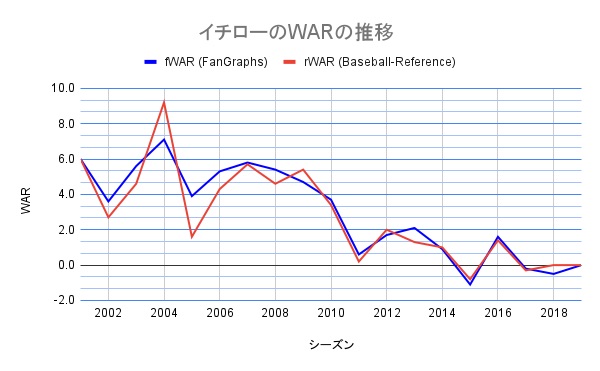
Looking at Ichiro’s year-by-year WAR, he started strong in his 2001 Rookie of the Year and MVP season, posting 6.0 fWAR and 6.0 rWAR.
He then reached his career peak in 2004, when his rWAR soared to 9.2, an extraordinary figure. From 2001 to 2010, he consistently maintained high values, serving as the face of the Mariners and excelling in all aspects of the game.
After 2011, however, his numbers gradually declined. By 2015, his WAR had dropped into the negatives (fWAR -1.1, rWAR -0.8). Even so, following his move to Miami, he managed to post solid contributions, recording 1.6 fWAR and 1.4 rWAR in 2016.
Fans in Japan can also follow WAR analysis and watch their favorite players in action live through MLB.tv’s official broadcasts.
Comparing Ichiro’s WAR with Japanese Players and Other Major Leaguers
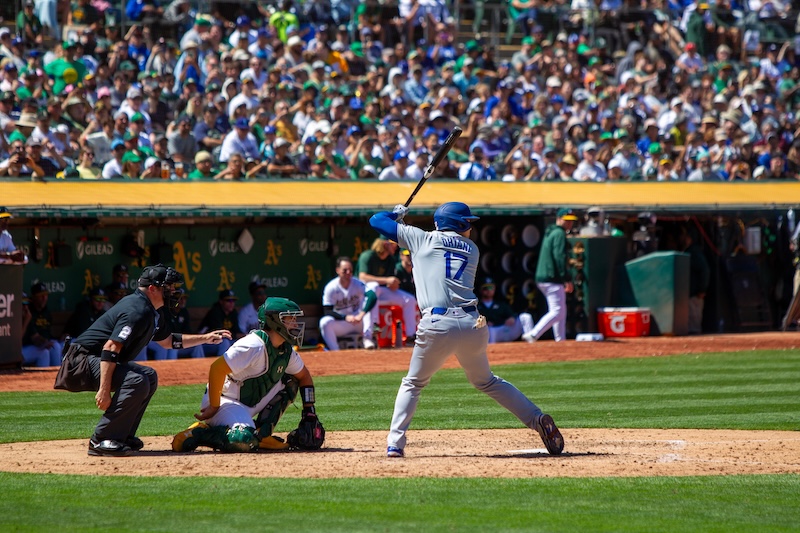
Ichiro’s WAR stands out among Japanese players, both in single seasons and over his entire career. Here, we will look at:
- Seasonal WAR rankings for Japanese position players
- Comparisons with other MLB stars
Seasonal WAR Rankings for Japanese Position Players
The highest single-season WAR ever recorded by a Japanese position player belongs to Ichiro’s 2004 season, when he posted 7.1 fWAR and 9.2 rWAR.
By comparison, Shohei Ohtani has also posted elite single-season WAR numbers. In 2023, he recorded 6.5 fWAR.
Because Ohtani contributes not only as a hitter, runner, and fielder but also as a pitcher, his overall impact extends beyond what WAR alone can measure.
Comparing with Other Players
Looking at career totals, Ichiro’s 57.6 fWAR and 60.0 rWAR rank at the very top among Japanese players. Meanwhile, Shohei Ohtani currently sits at 49.6 rWAR, which places him 329th in MLB history.
Among active players, stars like Mike Trout have already surpassed 80 career WAR, which might make Ichiro’s totals look less impressive at first glance.
Nevertheless, as of 2025, Ichiro ranks 195th all-time in rWAR, which firmly cements his status as an MLB legend.
Fans in Japan can follow WAR analysis and watch their favorite players live through MLB.tv’s official broadcasts.
What WAR Reveals About Ichiro’s Value [Summary]
Ichiro’s fWAR and rWAR during his prime were among the very best in the league, highlighted by his career-high 2004 season. Over his career, his 57.6 fWAR and 60.0 rWAR leave him unrivaled among Japanese position players.
Even when compared to a new-generation superstar like Shohei Ohtani, Ichiro’s steady, season-long contributions to team victories demonstrate why he is rightly regarded as a legend.
Fans in Japan can also use MLB.tv to watch every game in real time, track WAR analysis, and follow the performances of their favorite players.
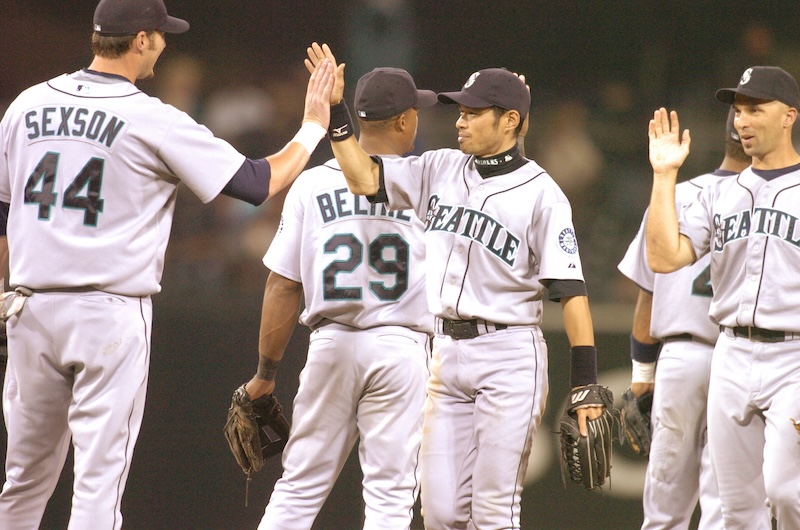
コメント